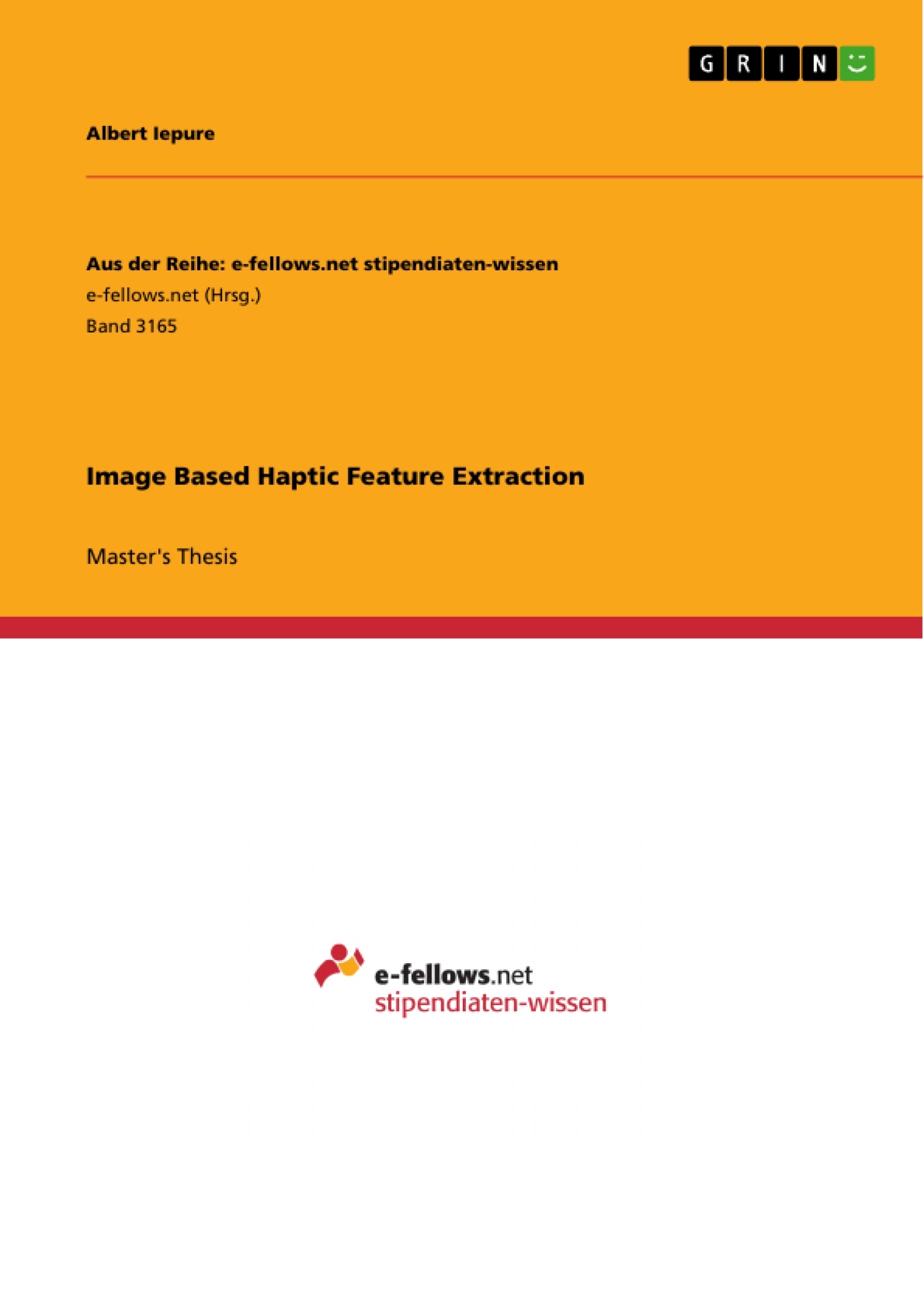Images of different object surfaces convey important information about haptically perceptible textures. The extraction of tactile information of different materials by making use of inexpensive technologies can have practical and commercial applications in e-commerce or robotics. However, differences in distance, rotation, lighting and focus conditions are hurdles which need to be overcome to extract robust image-based features that will allow a successful surface classification task.
In this work, eleven haptically relevant features are introduced, which have a low to invariant dependency on different camera conditions. These are used for a robust machine learning-based approach for surface classification.
A database of 690 images, corresponding to 69 different textures, is used to extract haptically relevant features. Perceptually-relevant image features such as roughness, softness and regularity are used to correctly classify the textures. The extracted features are perceptually relevant so that they can be also used in future work for the retrieval of the most similar textured surface to a classified one.
Experimental results and the evaluation of a cross-validated naive Bayes classifier show that the proposed approach allows for the successful classification of textured surfaces under varying camera conditions, a maximum prediction accuracy of 85.8% being achieved. When a subset of 6 features is selected, a classification accuracy of 82.5% is obtained.
Inhaltsverzeichnis (Table of Contents)
- Introduction
- Related Work
- Textural Properties
- Structure of Texture Patterns
- Features Defined by Tamura
- Coarseness
- Contrast
- Directionality
- Linelikeness
- Other Features
- Complexity
- Regularity
- Shortcomings
- Recording Procedure
- Original Database
- Magnified Database
- Haptically Related Textural Features
- Improved Features
- Coarseness
- Directionality
- Linelikeness
- Complexity
- Regularity
- New Features Definitions
- Edginess
- Color Distance
- Roughness
- Glossiness
- Softness
- Improved Features
- Subjective Experiment
- Results
- Statistical Evaluation of Features
- Feature Scaling and Cross Validation
- Statistical Analysis
- Feature Quality Identification
- Feature Selection for High-Dimensional Data Classification
- Classification Accuracy
- Original Database
- Magnified Database
- Discussion
- Statistical Evaluation of Features
- Conclusion
Zielsetzung und Themenschwerpunkte (Objectives and Key Themes)
This work aims to develop a robust machine learning-based approach for classifying textured surfaces using image-based features that are minimally dependent on camera conditions. The goal is to extract tactile information from images of different materials, enabling practical applications in e-commerce or robotics.
- Image-based feature extraction for surface classification
- Robustness to varying camera conditions
- Haptic perception and tactile information
- Machine learning and classification algorithms
- Application in e-commerce and robotics
Zusammenfassung der Kapitel (Chapter Summaries)
The introduction presents the motivation behind this work and outlines the need for robust image-based surface classification. Chapter 2 delves into related work in the field of texture analysis, exploring existing methods for extracting textural properties and defining relevant features. It examines shortcomings of existing approaches, emphasizing the need for features less sensitive to camera conditions.
Chapter 3 describes the database used for feature extraction and classification, including details about the original and magnified images. Chapter 4 introduces eleven haptically relevant features, some of which are improved versions of existing features, and defines new features like edginess, color distance, roughness, glossiness, and softness. This chapter focuses on the theoretical basis and computational methods for extracting these features.
Chapter 5 presents the subjective experiment conducted to validate the perceptually relevant features defined in Chapter 4. Chapter 6 analyzes the statistical properties of the features, discusses feature selection methods, and evaluates the performance of the classification system using a naive Bayes classifier. Finally, the discussion section provides insights into the experimental results and potential limitations of the proposed approach.
Schlüsselwörter (Keywords)
Image-based haptic feature extraction, surface classification, texture analysis, robust features, camera invariance, machine learning, naive Bayes classifier, perceptual relevance, e-commerce, robotics.
- Arbeit zitieren
- Albert Iepure (Autor:in), 2015, Image Based Haptic Feature Extraction, München, GRIN Verlag, https://www.grin.com/document/493690



